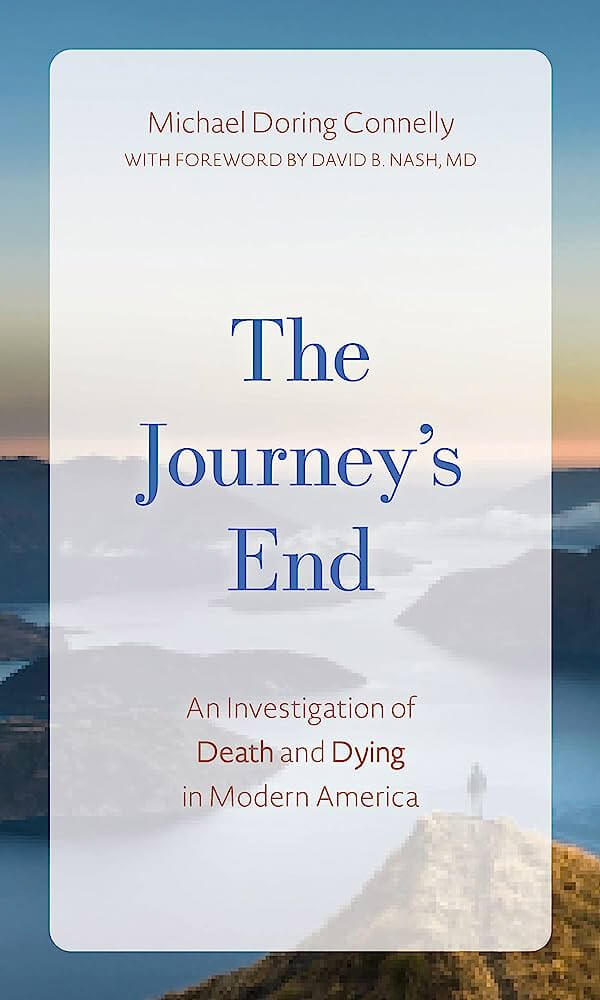July 11, 2023

Code Red (Part 2): Improving Healthcare Requires Trade-Offs, Not Solutions
This is Part 2 of “Code Red,” which outlines common-sense reforms to align service delivery with consumer needs. In part one, the author describes the overly complex and counter-productive coding system healthcare uses to fund itself. Is there really a diagnostic code for being bitten by a cow? Read Part 1 here.
“There are no solutions. There are only trade-offs.” —Thomas Sowell
A tragic feature of U.S. healthcare is its fundamental lack of care coordination. As a result, healthcare delivery is terribly fragmented. While fragmentation hurts all patients, it harms the physical and financial well-being of our elderly the most. Beyond harming patients, fragmentation is both expensive and wasteful.
Experts and economists have long acknowledged that excessive healthcare spending hurts the U.S. economy. We simply spend too much on healthcare, and this spending limits our country’s ability to invest in other critical social goods. In other words, every redundant dollar we spend on healthcare is a wasted opportunity to fund vital societal needs in infrastructure, education, and even innovation.
As the economist Thomas Sowell says, “There are no solutions. There are only trade-offs.” Arguably the biggest problem with healthcare is the fact that we do not acknowledge the reality of trade-offs. Instead, we keep spending on healthcare as if our resources were infinite. Perhaps ignorance is bliss. Our industry fails to acknowledge that misappropriated healthcare monies could be spent much more effectively elsewhere.
Fortunately, it is possible to improve healthcare while also reducing spending. Before getting into details, let me be clear: Real reform requires trade-offs. Moreover, necessary reforms will make many people uncomfortable. That is the price we must pay to get our country’s healthcare costs under control. With this in mind, I recommend the following five health system reforms.
 Reform 1: Changing How We Pay Physicians
Reform 1: Changing How We Pay Physicians
What’s the key to a successful ER? Triage. The same could be said for healthcare reform. We must prioritize our challenges and address with the worst one first: the physician payment system. The way we pay physicians is a disaster.
Fee-for-service (FFS) and capitation payment systems have serious shortcomings as Code Red: Part I demonstrates. In fact, their greatest failure is that they fail to adequately compensate non-procedural care, which is a critical — and growing — segment of effective healthcare delivery.
Now, you may be asking yourself: What is non-procedural care, exactly? Good question. Non-procedural care incorporates family medicine, internal medicine, palliative care, hospice, hospitals and mental health services. These specialties engage patients, get to know them and coordinate their care. These activities constitute non-procedural services. Of course, non-procedural care outcomes are difficult to measure (no matter how complex we make coding) but that does not justify ignoring or under-funding it.
In sum, a payment system that does not support non-procedural care services is seriously flawed. Since its inception, FFS medicine has failed miserably at paying for non-procedural care. Here’s a powerful example: Primary care only consumes 5% of healthcare expenses, whereas one treatment alone, dialysis, consumes 6% of all healthcare expenses.
In other words, changing the payment formula for primary care has limited risk and tremendous upside. So, how could we make that happen? The answer is simple: Have insurers pay primary physicians a salary. More specifically, the government should encourage insurers to pay physicians a reasonable salary for select services without using coding to determine their payment.
Currently, physician practices negotiate with private insurers on their fee schedule or capitation rates. Instead of negotiating these payment rates that rely on coding, health insurance companies should pay physicians a reasonable annual salary. I suggest a salary range of $300,000 to $450,000. While this is higher than the current market rate for these positions, the status quo has led to a massive shortage of primary care physicians. A higher salary range would attract much-needed physicians into primary care specialties.
Similarly, Medicare and Medicaid should negotiate a salary on an annual basis with physicians, but within a lower range of $300,000 to $375,000 to reflect the government’s lower payment rates. Of course, either the physician or the insurer is free to reject a contract. That decision would be made after each party does their own cost/benefit analysis. For instance, if an insurer felt a physician was unproductive and not worth their salary, the insurer would not contract with that physician and vice versa.
Under a salaried system, physicians would no longer focus on “making their numbers” by undertaking ever-increasing quantities of patients and procedures. They would no longer waste hours daily documenting care for coding. Instead, they could focus on delivering higher-quality care.
Of course, a physician’s salary is only a portion of a practice’s overall costs. Payers could reimburse other expenses, including office rent, IT equipment and non-physician salaries, on a cost basis. Cost reports and audits are routine procedures and the reasonableness of these expenses could be audited annually.
Taken together, these changes would effectively eliminate the physicians’ billing burden, saving billions of dollars annually. More importantly, this would relieve primary caregivers of irritating billing obligations. This payment process has the added benefit of dramatically reducing concerns about waste, fraud and abuse. The current system, which encourages volume and complexity, naturally invites manipulation.
This salary model is not perfect, but there are answers to potential concerns. For example, many may question the productivity of these salaried physicians. Under my proposed model, insurers would not be obligated to sign contracts with unproductive physicians. Even with its potential drawbacks, it would be a substantial improvement over our current model. It is a trade-off. Substantial evidence demonstrates that salaried caregivers improve quality, lower costs and streamline administrative functions.
Since this initiative only applies to primary care physicians, my suggested approach is incremental and only applies to a modest portion of total healthcare spending. This approach allows us to pilot the effectiveness of these recommendations with minimal risk. However, this approach would ultimately require legislation to standardize payment mechanics for primary care professionals among all governmental and commercial payers.
 Reform 2: Redesigning Insurance Coverage
Reform 2: Redesigning Insurance Coverage
It’s time to make all primary care services “medically necessary” and not subject to copays or deductibles. Under the salaried model, primary care physicians would no longer have any incentive to offer unnecessary care. They also would no longer be tempted to unnecessarily redirect patients for specialty, urgent or emergency care.
Importantly, this type of broad primary care insurance coverage approach would encourage the proper care coordination, managed in one centralized location — the primary care office.
 Reform 3: Improving Access to Primary Care
Reform 3: Improving Access to Primary Care
In order to improve care access, we have to do two things: First, enhance the role of nurse practitioners. Second, embrace telemedicine.
We will need a robust population of nurse practitioners to handle the increased demand for primary care services. Luckily, since they would no longer be subject to the complexities of coding, nurse practitioners would be perfectly positioned to handle that demand.
Regarding telemedicine, Congress needs to support this easy and efficient way to deliver vital care. Successfully implementing telemedicine will require additional low-cost investment. These investments aren’t occurring sufficiently because of the uncertain payment mechanics for virtual care services.
Reform 4: Making Primary Care the Headquarters for EOL Conversations
Of all the end-of-life (EOL) healthcare treatment models, hospice and palliative care are the most humane and cost-effective. However, many terminally ill patients today do not receive a clear explanation of these “comfort-care” options until it is too late.
Many doctors and insurers do not see these services as medically necessary. Physicians focus on curing their patients at all costs. Insurers respond by only paying for medically necessary services. Yet numerous studies have proven that properly administered EOL care improves care quality and dramatically lowers healthcare spending.
No one in healthcare oversees these critical EOL education conversations. In most cases, nurse practitioners can administer this important educational service. Equipping nurse practitioners to educate patients about EOL care would not only minimize stress and improve outcomes, it would also free up physicians to attend to other more pressing matters.
Making primary care the “headquarters for EOL conversations” would give patients the opportunity to have these critical EOL discussions.
 Reform 5: Streamlining Hospice and Palliative Care
Reform 5: Streamlining Hospice and Palliative Care
Hospice and palliative care are often the ideal end-of-life care option. Unfortunately, both patients and physicians misunderstand these services. For example, few individuals are aware that patients live longer (and more happily) under hospice care than they do with more intense treatment.
There are four reforms that would dramatically improve these services. First, replace the six-month death certification requirement with a terminal diagnosis requirement. Second, replace coding payments for these services with cost reimbursement. Third, allow patients to continue with curative care while in hospice. Fourth, enhance hospice’s homecare benefit because it is much less expensive than hospitalizations and ER visits.
Winning Over Skeptics
When presented with these common-sense reforms, skeptics say these suggested reforms will make healthcare more expensive.
To be fair, reforming the physician payment model is mostly untested, so it does not yet have a track record to support it.
Systems like Mayo, Cleveland Clinic and Kaiser do salary their physicians, as do many others. However, these systems still get paid through FFS and are still required to bill others and collect their revenues based on FFS. Concerns include an increase in volume, fraud, abuse and the complications associated with billing multiple insurance companies with differing payment formulas.
Consequently, these systems create volume incentives for those salaried physicians very similar to the FFS world. My model of the insurer paying the salary eliminates these issues.
While these changes make intuitive sense, the Office of Budget Management (OMB) and the Congressional Budget Office (CBO) do not accept intuition (although based on recent congressional budgets, they seem quite comfortable with fantasy fiction).
To satisfy the skeptics, I propose three concrete cost savings that could fund salaried physicians and hospice reform:
1. Tax Healthcare Benefits Like Wages
There is no rational reason healthcare benefits are not taxed like wages. Many people seem to forget that healthcare benefits are a component of total compensation. Numerous studies by the Massachusetts Institute of Technology and other respected research institutions have shown that not taxing health benefits encourages overutilization.
Politicians seem to have forgotten a basic rule of economics: If you want less of something, tax it. Currently, we have far too much spending on healthcare. Uwe Reinhardt, one of the most prestigious health economists in the nation, saw health insurance’s exemption from taxes as a regressive policy hurting low-income individuals and subsidizing the wealthy. He estimated the tax subsidies cost U.S. taxpayers over $3 billion annually. [1] In addition to these easily quantifiable tax revenues, there will be additional savings generated by incentivizing everyone to seek lower-cost care options.
In sum, sheltering health benefits from taxation is unfair to lower-income individuals. Also, taxing health benefits would motivate patients, providers and insurers to seek more cost-effective care options. The tax would generate revenue to support healthcare needs like primary care, while simultaneously reducing overall healthcare spending.
This tax is not an original idea. It was a critical element in the Affordable Care Act, often characterized as the Cadillac tax. Unfortunately, this provision was deleted before it got implemented. Its application required trade-offs. Healthcare isn’t good at trade-offs.
2. Eliminate Advertising for Prescription Drugs
The pharmaceutical industry spent over $8 billion in 2021 to market its products directly to consumers. Today the average American television viewer watches nine drug ads a day. Supporters of these ads argue that drug manufacturers use them to inform patients about diseases and potential treatments. Opponents of direct-to-consumer advertising argue that these ads misinform patients, artificially stimulate demand and lead to an overuse of prescription drugs.
The medical journal, “Oncologist,” published a study with a startling finding: “94% of patients had made a request for an advertised drug and 40% [of those oncologists] said they experienced one to five requests per week. Alarmingly, 74% of the physicians said patients asked for an inappropriate drug, which 43% [of these doctors] said they sometimes felt pressured to prescribe.”
This research suggests that advertising is disruptive and harmful to the patient-physician relationship. This is why, in 2018, the American Medical Association took a formal stance against direct-to-consumer advertising.
Money talks, and in 2019, Americans spent more than half a trillion dollars on prescription drugs. A research report published by the University of Pennsylvania’s Wharton School of Business tied the huge increase in pharmaceutical spending directly to the industry’s aggressive ad campaigns. [2]
This evidence demonstrates that the societal costs of pharmaceutical ads far outweigh their touted benefits. Eliminating direct-to-consumer advertising would improve care, return decisions around prescription drugs back to qualified professionals and save billions annually in health expenses, with one study citing an annual savings of $55 billion. [3]
3. Limit Geographic Variation in Medicare Expenses
Let’s take a big-picture approach and compare Medicare reimbursement to Social Security.
The Social Security Administration does not adjust Social Security payments due to the cost of living. Of course, Social Security benefit payments buy less in New York than they do in Nevada, but federal policy does not attempt to adjust these benefits for the cost of living. If it did, residents in Nevada would get lower benefits, while New York residents would get higher benefits.
Sounds a bit silly, doesn’t it? But that is exactly what Medicare does with its cost-of-living adjustment. Not only is this practice unfair, it gets worse every year because of how the formula operates. Medicare gives high-cost states more money each year, while low-cost states get less and less.
There is a dramatic variation in Medicare beneficiary spending across the United States, and Medicare’s wage index adjustment methodology is a major contributor to this variation in spending. For example, Medicare spending per enrollee was $10,936 in 2014. However, there was a 53% variation in this spending by state. For example, in 2014 New Jersey spent $12,614 per Medicare enrollee and Montana only spent $8,238. [4]
Instead of rewarding Medicare enrollees for living in ultra-expensive states like New York, our federal policy should reward people for living in states with lower costs. This simple change would dramatically reduce Medicare spending.
 Conclusion
Conclusion
If you enjoyed this article or would like to learn more about end-of-life care, I invite you to read my book, “The Journey’s End: An Investigation of Death and Dying in Modern America.”
With that out of the way, I will let President Franklin D. Roosevelt have the last word. Upon entering office during the Great Depression, Roosevelt introduced bold (some would say radical) measures. When a reporter asked the president what he would do if his programs didn’t work, his response was simple: “Take a method and try it. If it fails, admit it frankly, and try another. But by all means, try something.”
It’s beyond time to “try something” in healthcare to improve care outcomes and lower costs.
Sources
-
Uwe E. Reinhart, Priced Out: The Economic and Ethical Costs of American Healthcare (Princeton, NJ: Princeton University Press, 2019.
-
https://knowledge.wharton.upenn.edu/article/prescription-drug-ads/
-
Abby E. Alpert, Neeraji Sood, and Darius N. Lakdwalla, “Prescription Drug Advertising and Drug Utilization: The Role of Medicare Part D” (2015).
-
Lassman et al “Health Spending by State” 1991-2014.




